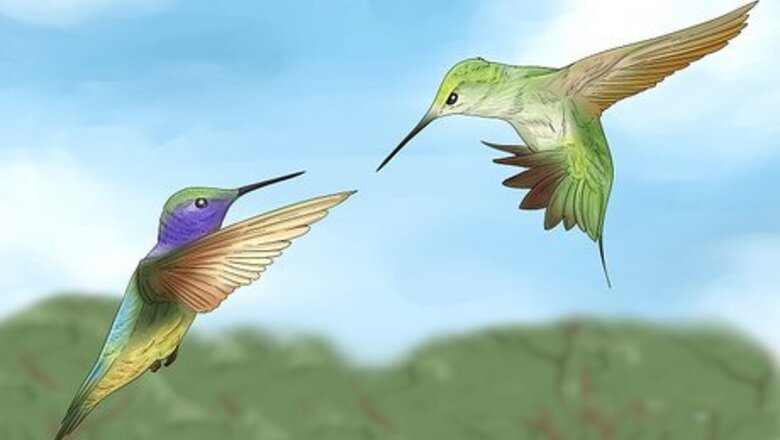
views
- Hummingbirds are unsocial and very territorial, so they’ll chase after competition and intruders.
- The main catalyst for aggressive hummingbird behavior: food. They have their favorite flower, and no one but them can drink from it!
- A male hummingbird will dive and chase a female during mating season to impress her.
Are hummingbirds playing or fighting when they chase each other?
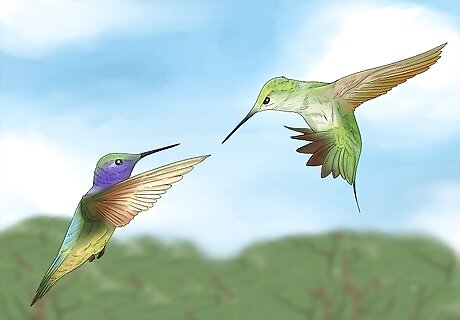
Hummingbirds are usually fighting when they chase each other. Believe it or not, hummingbirds aren’t the most sociable of creatures. They’re rather aggressive and territorial, especially when it comes to their food. You’ll likely see them racing each other to get to the juiciest flower first. Nectar can be hard to find, which is why hummingbirds are aggressive about it. It’s survival of the fittest, and they’ll do anything to get a good drink, even if that means knocking out their brother. Think of it like chasing away competitors. Hummingbirds won’t physically fight, but they will dart after each other to drive competition away. Hummingbirds can dive at speeds up to 60 mph—that’s faster than a deer can run!
Reasons for the Chase
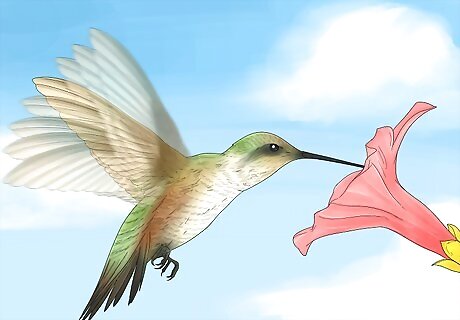
FoodHummingbirds want to make sure they’re the only ones drinking out of their favorite flower. They’ll zip, dive, and chase after any other creature (including other hummingbirds) that tries to take a sip of their nectar. This is why you’ll often see hummingbirds perched close by a particular flower or hummingbird feeder—they’re claiming it as theirs. These fascinating animals have very fast metabolisms and need to eat about half of their body weight every day—that’s having a meal or snack every 10 to 15 minutes!
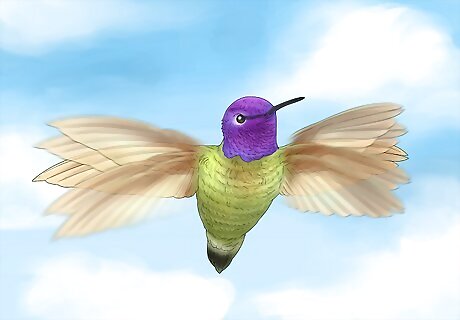
Showing OffHummingbirds may not be the most sociable, but that doesn’t mean they don’t like to flaunt every now and then. Male hummingbirds will fluff their feathers, dance, and dive to get a female hummingbird’s attention during mating season. The female will judge the male’s chase to see if he’s worthy of her affection. Courting or mating season usually occurs in the spring. A male’s wings can beat up to 200 times per second during their courting display—how cool is that?
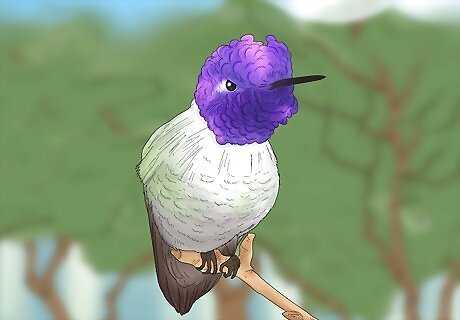
TerritoryOnce a male hummingbird claims his territory, he’ll be on high alert for who enters it. He’ll become possessive of the females in the surrounding area and claim them as his own. If another male comes fluttering about, he’ll stop at nothing to chase the competition away. Before a chase starts, the hummingbird may warn off the other male with a fast, squeaky call to say, “Get off my lawn!” The male may also fluff up his feathers to appear bigger to his intruder.
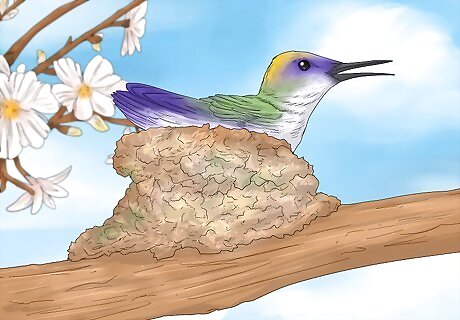
ProtectionMale and female hummingbirds will chase threats away from their nest. It’s best not to get on the bad side of a hummingbird, as they’ll do whatever it takes to protect their young. If another hummingbird or animal gets too close to a hummingbird’s nest, the male and female will team up to take the threat down. Males will give off a warning call if their territory is invaded. If the intruder doesn’t leave, they’ll start their chase. These tiny winged creatures’ nests are typically made of twigs, lichen, moss, leaves, and/or spider silk and are hard to find. Females typically build and pick the location for the nest.
How to Minimize Aggression
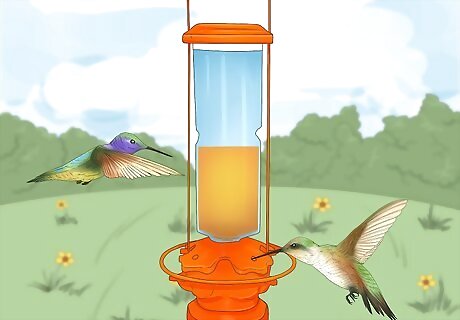
Leave out multiple feeders. If you have a lot of hummingbirds in your yard, it’s important to have more than one feeder. Since they’re unsociable, hummingbirds won’t want to share the nectar you leave out for them. This can cause fights and chasing. Nip this in the bud by putting 2 or more feeders around your yard. Make your own hummingbird feeder by filling a Mason jar with nectar and puncturing holes in a red, plastic circle the size of the jar’s lid. Mix 1 part refined white sugar and 4 parts water to make homemade hummingbird nectar. Plant plenty of hummingbird-friendly plants to give them more opportunities to drink. They love bee balm, cardinal flower, trumpet creeper, coral honeysuckle, and columbine.

Spread out your feeders. Make sure your hummingbird feeders aren’t too close together; otherwise, there may be some aggressive competition. Aim to keep each feeder at least 10 ft (3.0 m) apart, or where the feeders aren’t viewable from each other. Try putting one feeder in the backyard and another in the front yard. This way, the house acts as a barrier. Hang the feeder in an open space near some cover, like a porch or tree. Place your feeder at least 15 ft (4.6 m) away from any windows, as hummingbirds could accidentally crash into them.
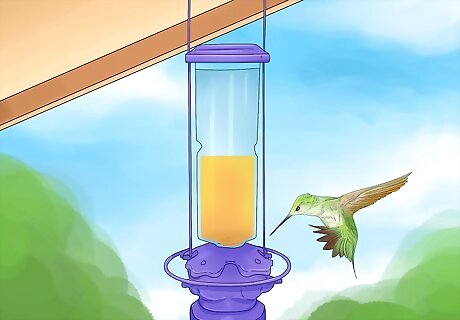
Provide plenty of perching areas. Place your feeders near trees or awnings, so the hummingbirds have a place to rest between meals. This is a great way to hone their territorial nature and tuck your feeders out of plain sight.
Do hummingbirds kill each other?
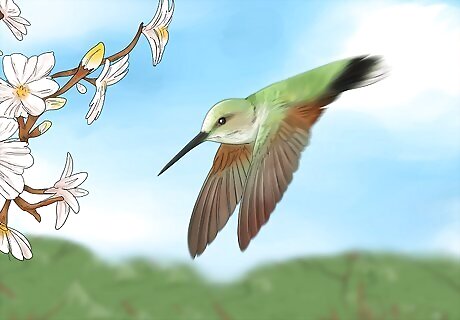
Hummingbirds only intend to scare each other, not kill. When a hummingbird dives and chases away an intruder, they’re not planning on killing the other, but it could happen. These fast-flying creatures are aggressive, and if an intruding hummingbird doesn’t leave another’s territory, it could lead to a blood bath. This is a rare occurrence, however, as hummingbirds tend to dive, chase, peck, and claw only in extreme situations. Typically, they know when to fly away. Don’t let this behavior scare you! Hummingbirds are not harmful to humans and will be more timid around you than anything else.
















Comments
0 comment